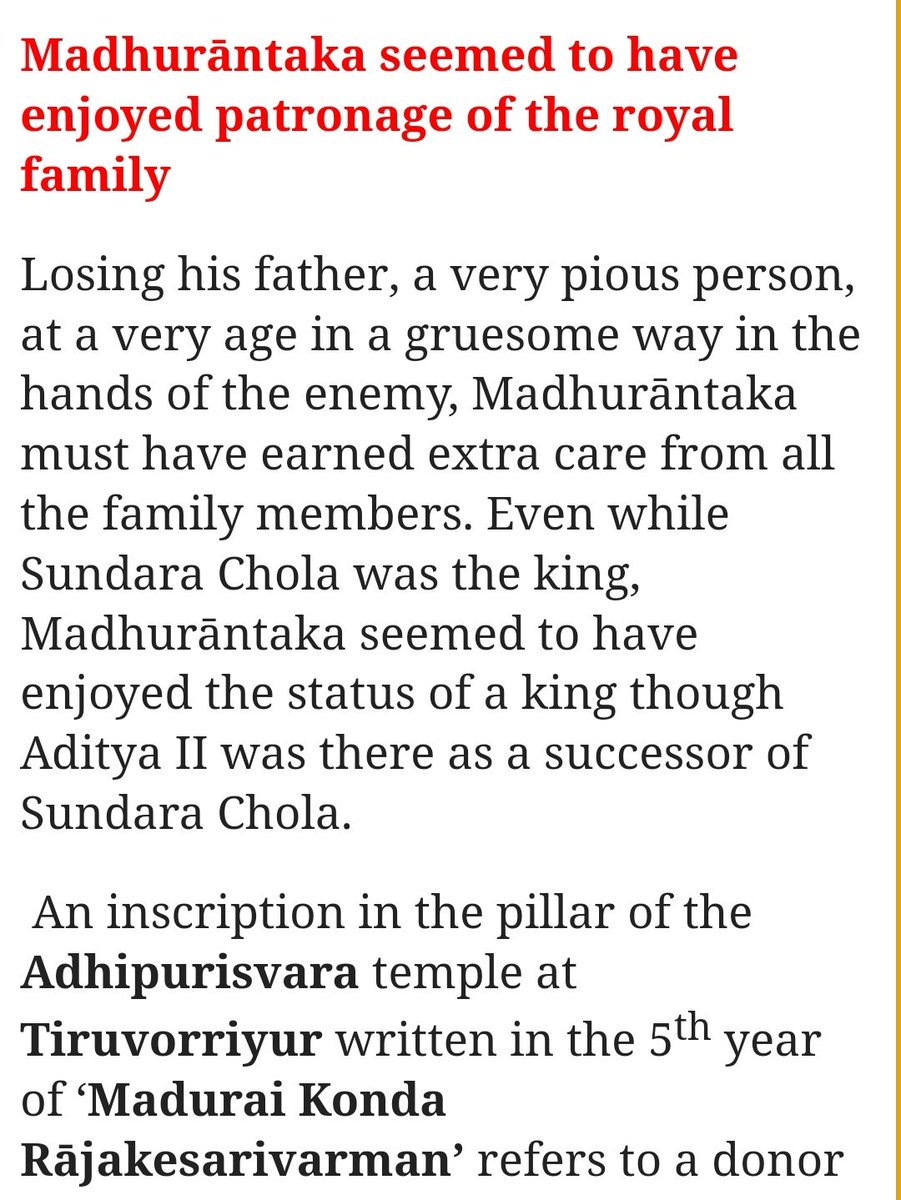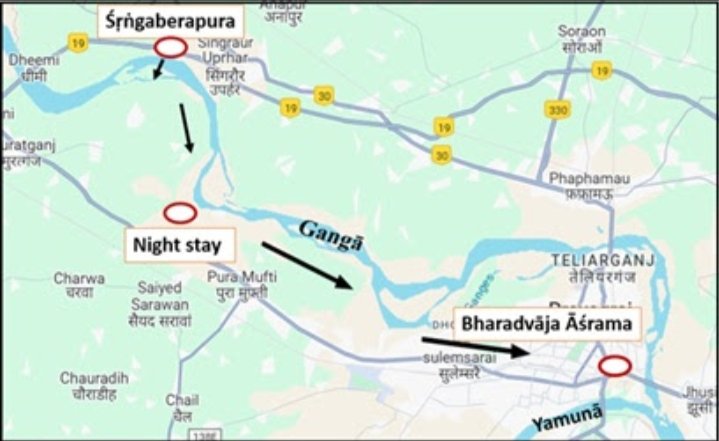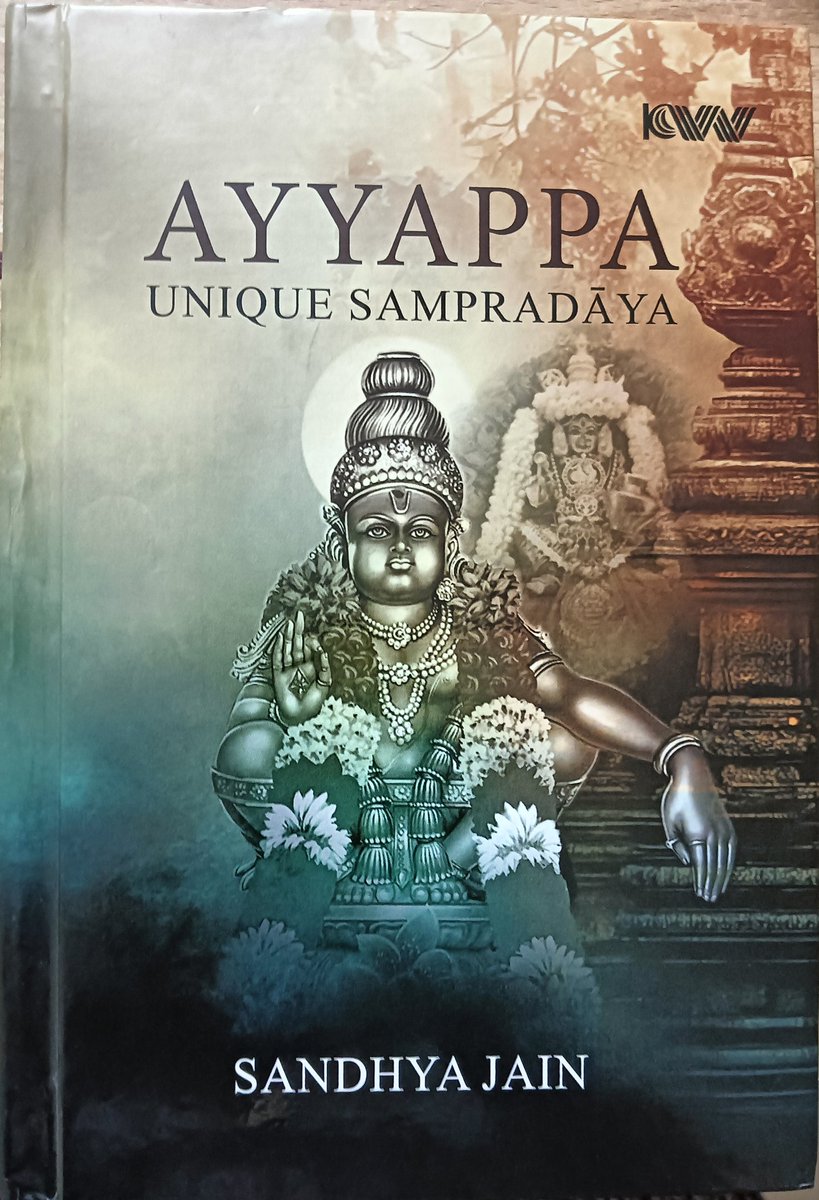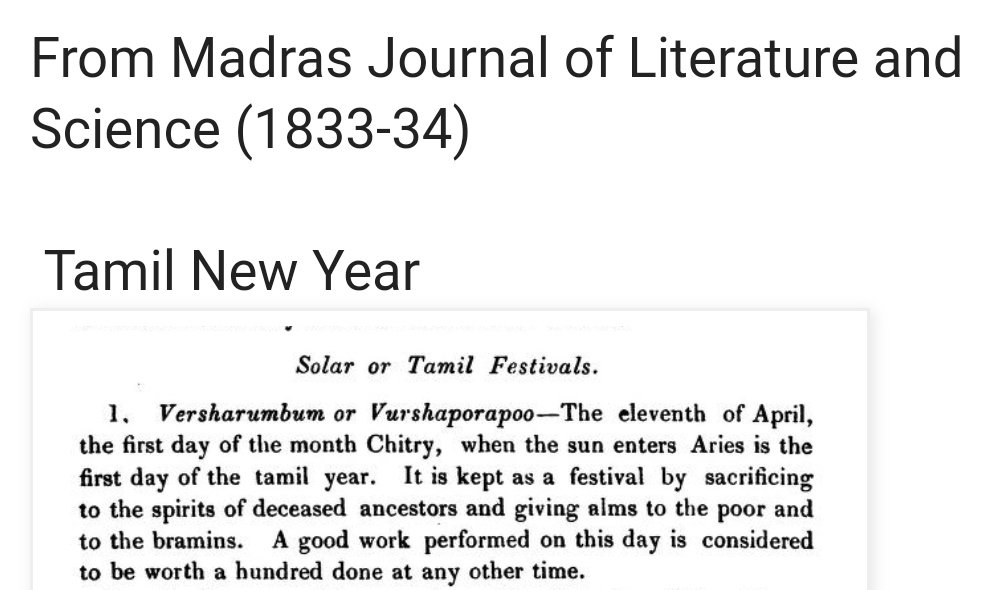The historical fiction of Ponniyin Selvan written by Kalki and made into a movie differs in several ways from the original history of the characters portrayed. The true history of that period is being brought out in a series.
Part 1: Introduction
jayasreesaranathan.blogspot.com/2023/03/who-ki…
+
Part 1: Introduction
jayasreesaranathan.blogspot.com/2023/03/who-ki…
+

In part 2, I've shown 2 revelations of importance to solve the mysteries of that period. Successor was appointed when the predecessor died. Madhurantaka was given kingship by Aditya when Sundara chola died.
jayasreesaranathan.blogspot.com/2023/03/aditya…
+
jayasreesaranathan.blogspot.com/2023/03/aditya…
+

Part 3:
What is the besic question to unravel the mysteries around PS events?
jayasreesaranathan.blogspot.com/2023/03/the-ba…
Date of Madhurantaka derived from Thiruvidaimarudur & Kumbakonam records and the date features of 2nd year of Rajaraja of Udayarkudi inscription throws a major question
+
What is the besic question to unravel the mysteries around PS events?
jayasreesaranathan.blogspot.com/2023/03/the-ba…
Date of Madhurantaka derived from Thiruvidaimarudur & Kumbakonam records and the date features of 2nd year of Rajaraja of Udayarkudi inscription throws a major question
+

Why Madhurantaka was preferred over Arulmozhi varman?
Part 4 of #PonniyinSelvan.
jayasreesaranathan.blogspot.com/2023/04/why-ma…
Also the year of Rajaraja's accession is deciphered from the date features given in Udayarkudi inscription. It matched with CE 978. A year before that Aditya died.
+
Part 4 of #PonniyinSelvan.
jayasreesaranathan.blogspot.com/2023/04/why-ma…
Also the year of Rajaraja's accession is deciphered from the date features given in Udayarkudi inscription. It matched with CE 978. A year before that Aditya died.
+

Part 5 of #PonniyinSelvan
Was there a prior enmity with Vira Pandya that caused Aditya Karikala to avenge by taking off his head?
Seems so, going by Vira Pandya's title, "Cholan Thalai Konda"
And it made Madhurantaka enjoy the patronage of Chola family
jayasreesaranathan.blogspot.com/2023/04/the-ch…
+
Was there a prior enmity with Vira Pandya that caused Aditya Karikala to avenge by taking off his head?
Seems so, going by Vira Pandya's title, "Cholan Thalai Konda"
And it made Madhurantaka enjoy the patronage of Chola family
jayasreesaranathan.blogspot.com/2023/04/the-ch…
+

Part 6 of PS brings out the original name of Aditya Karikala.
Also proved that he was very much a married man, had many wives.
He died only on his 13th year.
This evidence is cross checked with the solar eclipse date of 12th year of Vira Pandya.
jayasreesaranathan.blogspot.com/2023/04/origin…
+
Also proved that he was very much a married man, had many wives.
He died only on his 13th year.
This evidence is cross checked with the solar eclipse date of 12th year of Vira Pandya.
jayasreesaranathan.blogspot.com/2023/04/origin…
+

Part 7 of #PonniyinSelvan
Alternating Rajakesari & Parakesari titles found missing with Aditya and Madhurantaka as both were Parakesari.
Who was the missing king inbetween them?
Why did Madhurantaka appear to covet the throne?
jayasreesaranathan.blogspot.com/2023/04/the-mi…
+
Alternating Rajakesari & Parakesari titles found missing with Aditya and Madhurantaka as both were Parakesari.
Who was the missing king inbetween them?
Why did Madhurantaka appear to covet the throne?
jayasreesaranathan.blogspot.com/2023/04/the-mi…
+

Part 8 of #PonniyinSelvan
* From Rajaraja's initial war activities (Kandalur Shalai) the identity of the assassins of Aditya deciphered.
*If Kalki is with us today and had known this history of the Cholas, how would he have reacted?
jayasreesaranathan.blogspot.com/2023/04/rajara…
+

* From Rajaraja's initial war activities (Kandalur Shalai) the identity of the assassins of Aditya deciphered.
*If Kalki is with us today and had known this history of the Cholas, how would he have reacted?
jayasreesaranathan.blogspot.com/2023/04/rajara…
+


In continuation of the series on #PonniyinSelvan
I gave a two-part interview to @pesutamizhapesu
Blog:
jayasreesaranathan.blogspot.com/2023/04/my-int…
Part 1:
+
I gave a two-part interview to @pesutamizhapesu
Blog:
jayasreesaranathan.blogspot.com/2023/04/my-int…
Part 1:
+
Part 2 of my interview to @pesutamizhapesu
On #PonniyinSelvan
Blog:
jayasreesaranathan.blogspot.com/2023/04/my-int…
Video 2:
+
On #PonniyinSelvan
Blog:
jayasreesaranathan.blogspot.com/2023/04/my-int…
Video 2:
+
Another series of interviews on #PonniyinSelvan given to @mediyaannews
Can be accessed here:
jayasreesaranathan.blogspot.com/2023/04/a-shor…
@omprakash678
Can be accessed here:
jayasreesaranathan.blogspot.com/2023/04/a-shor…
@omprakash678
• • •
Missing some Tweet in this thread? You can try to
force a refresh

















